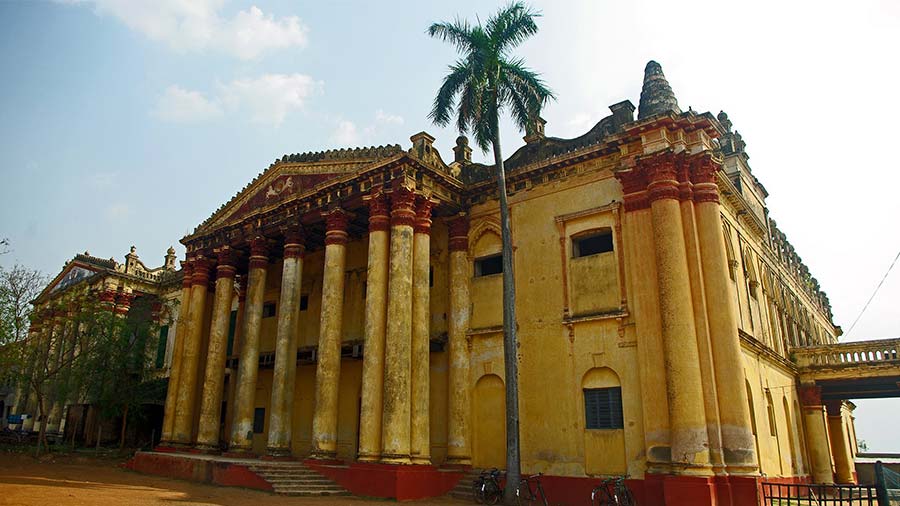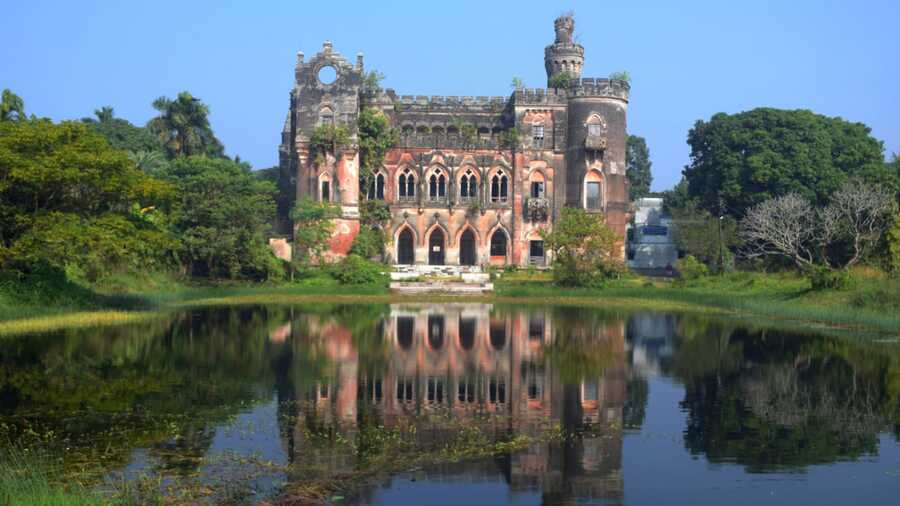Even a seasoned traveller, who has witnessed the grandeur of Bengal’s feudal mansions, will be awestruck by Hetampur’s Ranjan Palace, built in 1905. About five hours from Kolkata by road, the colossal twin mansions in Birbhum district’s Hetampur are a sight to behold — sprawling buildings built in Greek architectural style, complete with Corinthian pillars and porticos. The mansion reportedly had 999 doors, just one short of Hazarduari in Murshidabad, which is perhaps the only mansion in rural Bengal comparable to Ranjan Palace.
A man by the name of Radhanath Chakravarty, born in 1768, is considered the patriarch of the Hetampur Rajbari. After the decline of neighbouring Rajnagar, an important town in the history of Bengal and Birbhum, Radhanath Chakravarty of Hetampur rose to fame by acquiring land on lease from the then Nawab of Murshidabad in 1781. Radhanath’s son Bipracharan acquired more property and eventually becoming Hetampur’s richest landlord and the most successful member of the Chakravarty family.
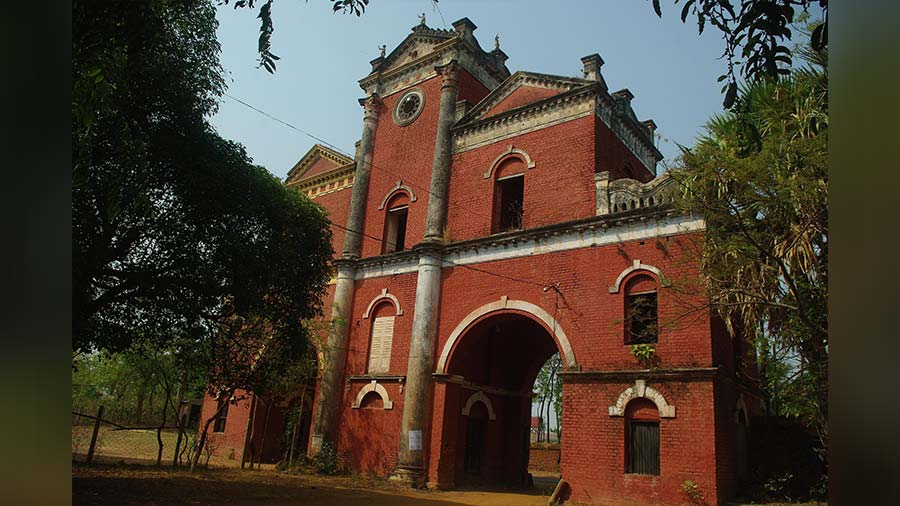
The gate of Ranjan Palace
Bipracharan’s elder son Ramranjan was given the title of ‘Raja’ in 1875 by then Governor General Lord Northbrook, followed by the title of ‘Raja Bahadur’ by Lord Lytton in 1877. In 1905, it was under his direction that the construction of Ranjan Prasad or Ranjan Palace was completed.
The Ranjan Prasad of Hetampur
A massive three-storied gate in red brick marks the entry to the premises of the Ranjan Prasad or Ranjan Palace. The architectural style of the gate has elements from the style of the mansions, and a non-functional clock on the top storey.
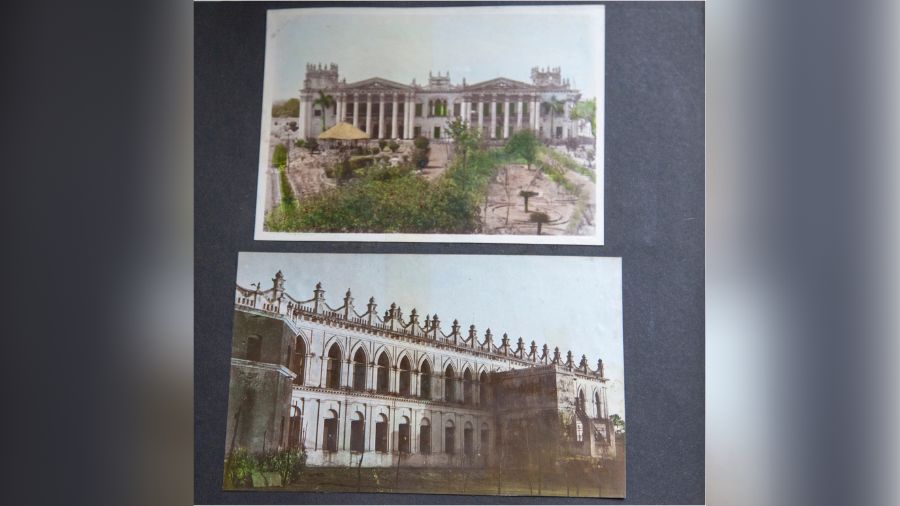
An old photograph of Ranjan Palace from the Chakravarty family album Courtesy: Chakravarty family of Hetampur
At present, a part of the palace is occupied by a school and another houses a college. Unmindful repairs and repainting has taken away much of the glory of the building. The area occupied by the school has seen more drastic changes than that housing the college, including the dismantling of a long balcony. A number of trees standing in a straight line between the two halves robs visitors of the pleasure of viewing the entire mansion at one go, and the sight is only seen in old photographs.
The part of the mansion occupied by the college is open for a tour on request. The large inner courtyard has walls with stucco work and a trap door-like entry leads to the first floor, and a classroom which is accessible to visitors on holidays. There are high ceilings and long corridors with several doors that have frescoes painted over them. A section of the mansion in this half also houses a ladies hostel.
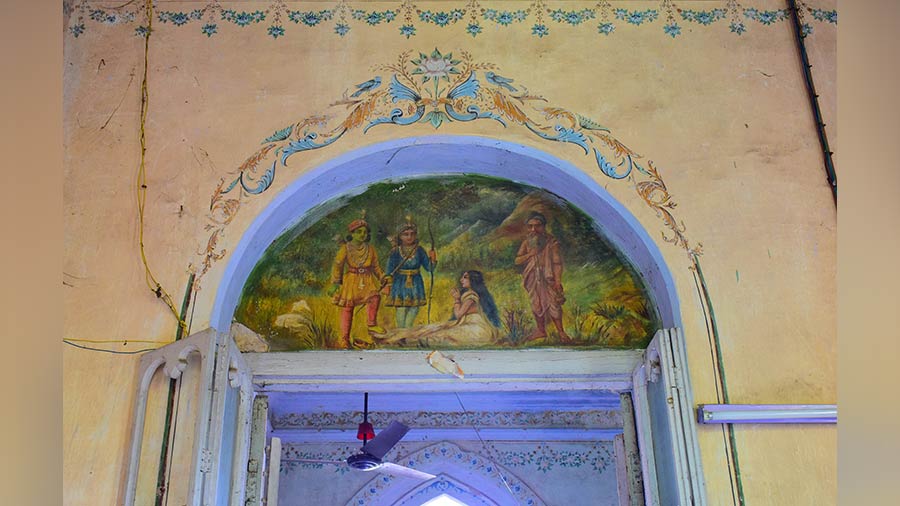
Frescoes inside Ranjan Palace
A number of famous films including Goopi Gyne Bagha Byne and Ganadevata have been shot at the premises, but perhaps the most extensive shoot at the palace was for the Feluda telefilm Gosaipur Sargaram, directed by Sandip Roy.
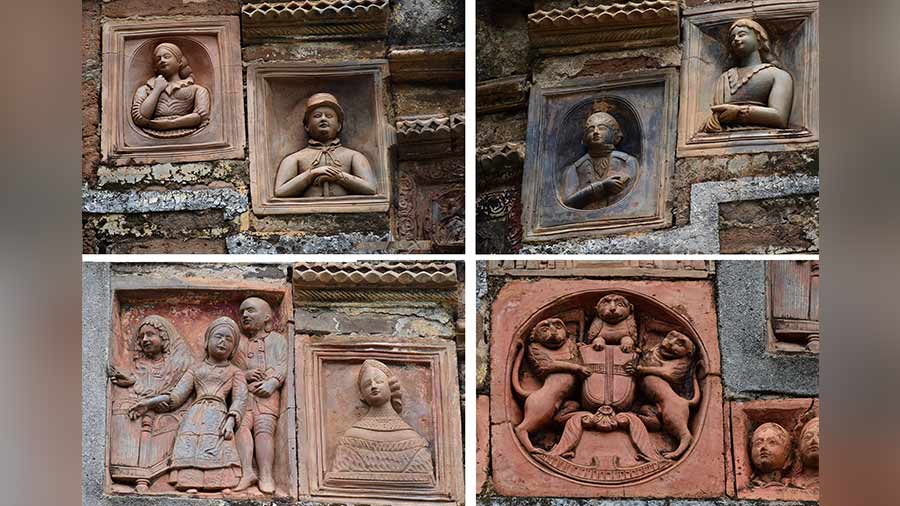
The terracotta panels at Chandranath Shiva Temple with European figurines and a British coat of arms
Apart from the colossal mansion, Hetampur’s other interesting attractions include the Radhamadhab temple inside the Hetampur Raj High School, established in the premises of the old palace. Two other temples, both with terracotta work, are also worth visiting. The octagonal Chandranath Shiva Temple and Dewanji Shiva Deul Temple. The former is particularly worth mentioning for its terracotta panels that feature a number of European figurines including a Queen Victoria lookalike and a British coat of arms.
The rise and fall of Hetampur and Rajnagar
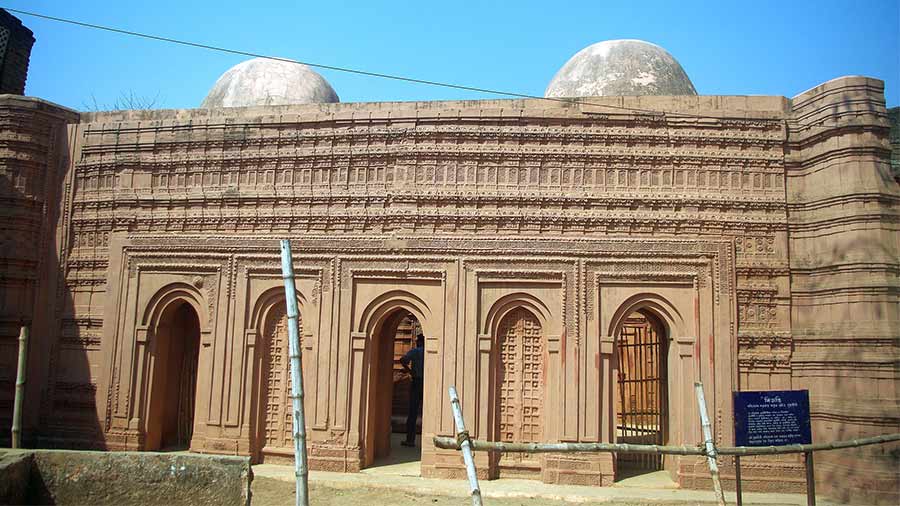
Motichur Mosque at Rajnagar
Though present-day Hetampur is a small town, the settlement and its neighbouring town Rajnagar, played an important role in the history of Bengal. It is documented that two brothers, Bir Singh and Chaitanya Singh, settled in today’s Birbhum region after having travelled from the northwestern parts of the country. It is said that Birbhum, which translates to ‘land of the brave,’ gets its name from Bir Singh. The descendants of Bir Singh, referred to as Bir Rajas, continued to rule the western part of the district for about 300 years, with Rajnagar as their capital, even holding their own against the Pathans under Muhammad bin Bakhtiyar Khilji, who became ruler of Bengal in 1206.
The last Bir Raja lost his life in a coup set up by the queen and two Pathan men under his employment. After the queen’s death, Rajnagar came under Pathan rule from around 1600. The Pathan zamindars held on to Rajnagar for over 150 years, building magnificent palaces, luxurious hamams, beautiful gardens, mosques and an imambara. Among these, the Motichur Mosque, which has beautiful terracotta panels on its walls, remains in good shape and is under the protection of the state's archaeology division. The ruins of the imambara and the hamam are visible by a pond, and nearby are two pillars — the only remaining signs of the Rajnagar palace.
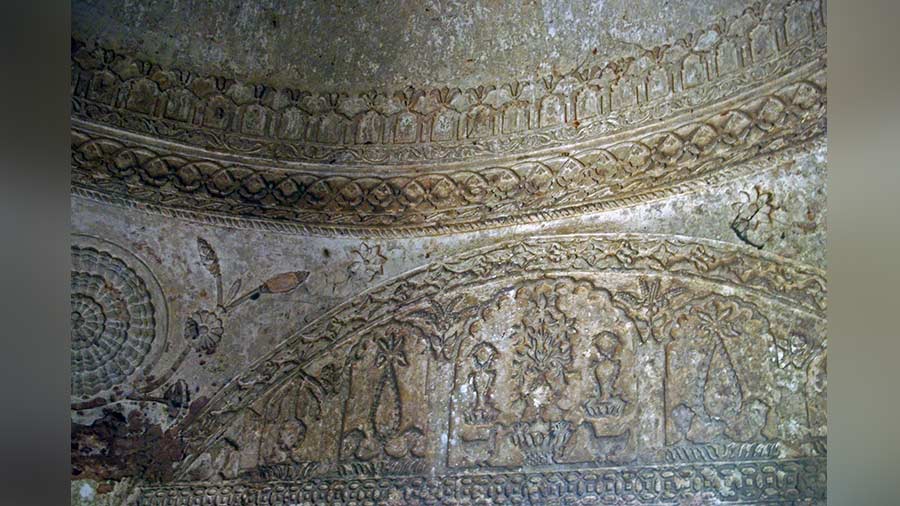
The decorative walls of the hamam
Hetampur was named after senior army general Hatem Khan who served under the fourth Pathan ruler of Rajnagar. Khan suppressed a rebellion led by an ex-employee Raghab Roy at Raghabpur, 60km from Rajnagar. Later, the place was renamed Hatempur, which changed to Hetampur with time. Members of the Roy family later became the Gomasta (secretary) and Ijaradar (lease holder) of the Rajnagar zamindars.
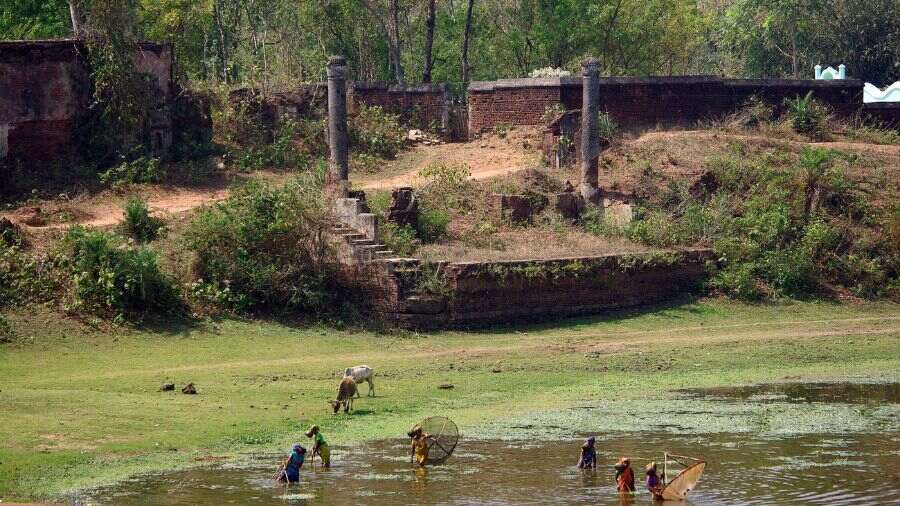
Ruins of Rajnagar Palace
Hatem Khan died in 1730, and the fort he built at Raghabpur was handed to his associate Hafez Khan, who was famous for his scandalous marriage to the daughter of the Emperor of Delhi. Nothing much remains of the fort, except for a memorial for Hafez Khan’s wife Sherina, who killed herself after her husband died in battle.
It was during Hafez Khan’s rule that the Chakravartys gained favour, with Chaitanya Charan Chakravarty, whose musical talents found Khan’s patronage. Chaitanya died in penury after Hafez Khan’s death but his second son, the ambitious Radhanath, went on to head the Hetampur Rajbari, eventually bringing members of the Roy family from the Rajnagar zamindari under his employ as well.
The story of a bygone era
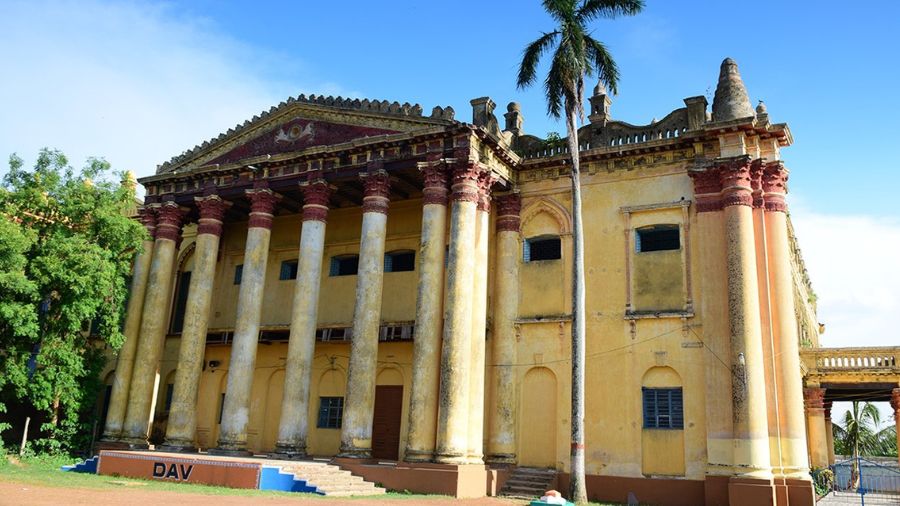
One half of Ranjan Palace
Post independence and the abolition of the zamindari system, it was impossible to maintain the palatial property. The meagre government stipend could not match costs and Ranjan Prasad was rented to the college and school to sustain the property. The building is not protected under any government endeavours till date. The chariot for Ratha Yatra, which was the built heritage in the premises, was properly conserved by INTACH, Santiniketan Chapter in 2015.
The last male descendant of the family, still referred to as raja by the locals, Madhabiranjan Chakravarty, passed away in 2015. Ranjan Palace stands today as a remnant of a bygone era that lost a significant part of its character to the vagaries of time.
Travel details:
- Hetampur is 200km northwest of Kolkata, and can be reached by road or by train.
- If driving, take the Durgapur Expressway bypassing Saktigarh, Burdwan, Mankar and heading straight to Illambazar from Darjeeling More. Drive towards Siuri before taking the road towards Hetampur on the left. Rajnagar is another 30km from Hetampur.
- The nearest railway station is Bolpur. Take a train to Bolpur, and hire a car from the station to visit both Hetampur (40km away) and Rajnagar in a day.
- There are no decent eateries at Hetampur. If going by road, stop for a meal at the eateries near Panagarh or between Bolpur and Illambazar.
